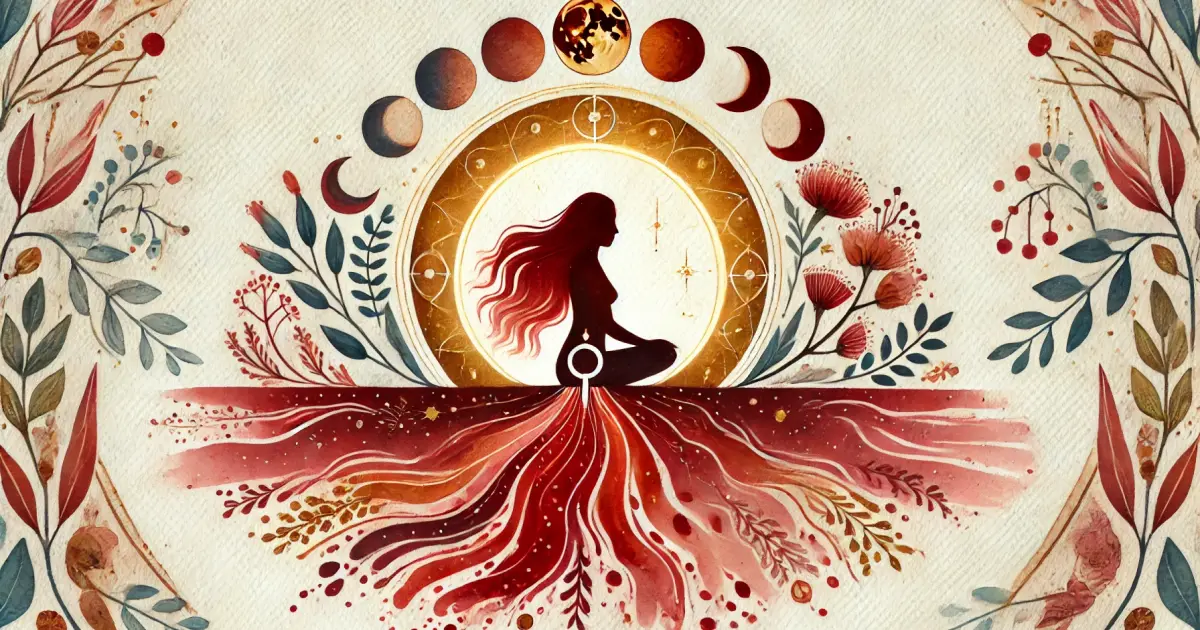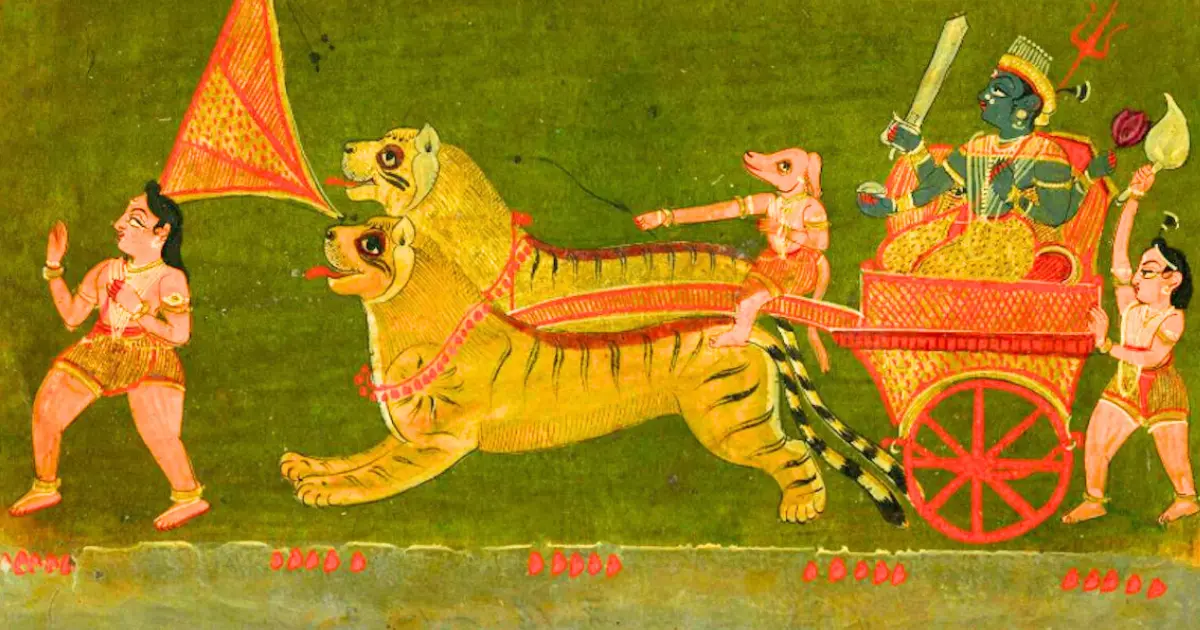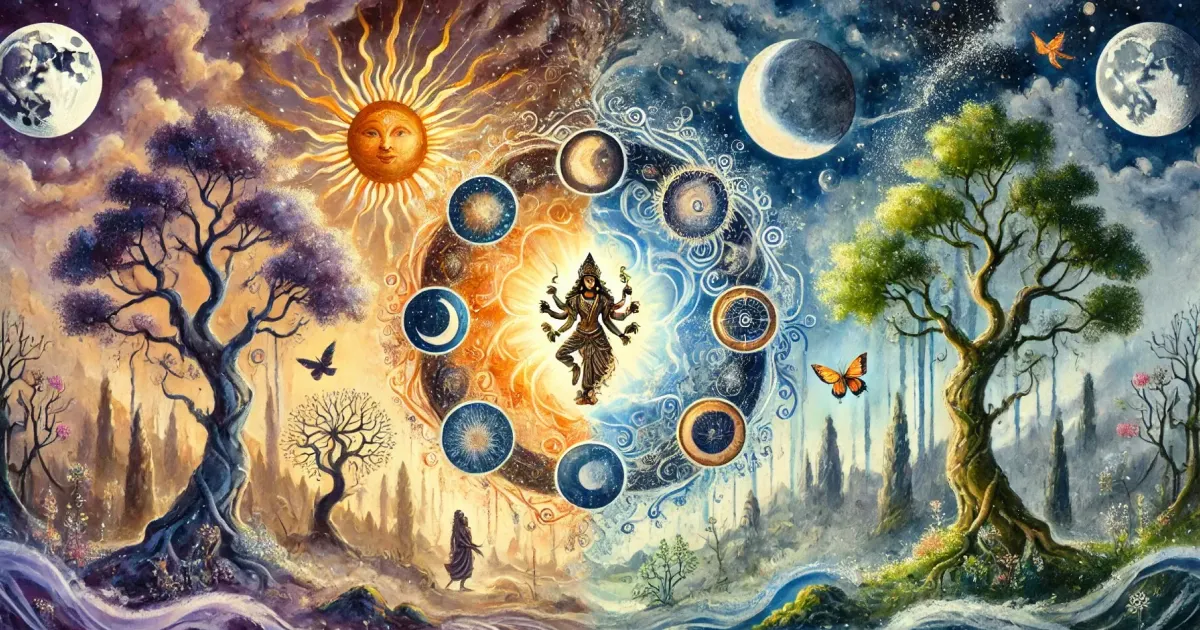Also read Part 1 of this series, which provides a brief overview of the Hindu view of menstruation.
There are two approaches to the topic of women and religion — trying to prove how a religious tradition has historically excluded and degraded women, or analyzing a religious tradition with the intent of identifying aspects that are respectful of women in that tradition.1
The former approach simply reiterates and perpetuates misogyny, but the latter is helpful in the reconstruction of a tradition through the exploration of the ways in which the lives of women are organized and influenced. Religious and cultural practices and rules prescribed to women during menstruation are dismissed and shunned as being regressive, oppressive, primitive, and irrational. There is a lot of concern that Indian women engaging in traditional cultural practices during menstruation such as seclusion, the use of a cloth, rituals, etc. are unhygienic and/or superstitious in nature. Such practices are often attributed to poverty, illiteracy, and patriarchal imposition, but in reality, they are grounded in traditional wisdom and lived experiences of women, and have a definitive cultural context. The issue of society’s squeamishness around menstruation cannot be apportioned to religion or culture — surely a culture that prays to menstruating goddesses, celebrates the onset of menarche and observes festivals that revere menstruation does not view menstruation as an evil — as portrayed in the discourse manufactured by academia and media.
To this end it is important for Hindus, especially women and parents, to understand not only the authentic Hindu view of menstruation (covered in Part 1) but also distortive narratives surrounding the traditional position.
Apffel-Marglin and Jean write in Weaving the Body and the Cosmos: Two Menstrual Festivals in Northeastern India that:
From a modernist perspective, a modernist ontology, the enactments during both the Ambuvaci and the Raja Parba festivals of South Asia, are metaphorical and ritualistic—in the modernist pejorative sense of this term—actions that cannot have transformative, real, effects; actions that are not “real” but merely symbolic or metaphorical. Furthermore, many mainstream feminists see the generative capacities of women as being biological and hence natural, that is something without agency, mind, and volition. Thus, the sacralization of these capacities is rejected since nature is seen as universally dominated and controlled by culture.2
Menstrual ‘Taboo’
Menstrual taboos are determined by a plethora of psychological, ecological, and social factors, and vary across cultures with the core principles being more or less similar, such as the shared dialectical of the sanctity and pollutive nature of menstrual blood. Taboos are cultural constructions and must be dealt with as such. They are symbolic, arbitrary, contextualized, whose potentially multivalent meanings and intentions emerge only within the cultural and regional contexts in which they prevail.3 Taboos ordinarily reflect a host of biological and social concerns whose origins and functions cannot be rationalized by any one explanation. Thomas Buckley and Alma Gottlieb in the introduction to ‘Blood Magic’ argue that there is no such thing as a menstrual ‘taboo’, and that what exists is rather, a set of distinct rules of conduct during menstruation for a particular purpose, carrying many symbolic meanings. They write that “(m)any menstrual taboos, rather than protecting society from a universally ascribed feminine evil, explicitly protect the perceived creative spirituality of menstruous women from the influence of others in a more neutral state, as well as protecting the latter in turn from the potent, positive spiritual force ascribed to such women. In other cultures menstrual customs, rather than subordinating women to men fearful of them, provide women with means of ensuring their own autonomy, influence, and social control”.4 The direct influence of simplistic cultural anthropological theories is felt on the understanding of taboos in the modern day.
The most pervasive and persuasive interpretation of the effect of menstrual taboos in both literature and popular culture and media is one that equates the notion of taboo with oppression of women by society. This perspective ignores the fact that taboos surrounding the menstrual cycle are more restrictive on the actions of others around than that of the menstruating woman herself. However, when the harm in violating the norms is not a danger to others but to the menstruating woman herself, this speaks to the sensitivity to the vulnerability of the women in this phase.
In addition, it is likely that menstrual ‘taboos’ are primarily utilitarian, embedded in a religious system to ensure adherence to practices that benefit their physical and mental health and well-being — procedures that would presumably otherwise be ignored as trivial or irrational.
Traditional Beliefs vs. Science
It is only within the past few decades that the scientific understanding of menstruation has deepened, though science is still unable to explain the pathophysiology of the constellation of symptoms women experience in their para-menstrual, called premenstrual syndrome. In fact, as late as the 1960s some Western physicians considered conception most likely to occur during menstruation, and the scientific community gained consensus relatively recently on the fact that the most likely time for ovulation is mid-cycle. Until recently, twentieth-century doctors have also been dismissive of menstrual complaints as being all in the head, whereas current medical literature has taken the extreme opposite stance, viewing menstrual complaints as all in the body, to be treated with drugs alone.5
It is perhaps unsettling to learn that science has not been infallible over the ages, and is probably not unerring even today. The crux of the issue then is that scientific biology is presumed to always be wholly accurate rather than recognising that it is also culturally and historically constructed. When we evaluate non-scientific traditional beliefs armed with science, the bodies of women are reduced to empirical givens, quite separate from the cultural variables and context they are situated in.
Conclusion
From the above discussion, it is evident that the cultural construction of reality is not arbitrary but rather the meanings that are culturally attributed to the human body and its processes, such as menstruation, must have something to do with those processes themselves. Menstrual symbolism is a part of the larger landscape of the culturally defined body, and the body, culture, and society are all interconnected within a highly complex system.
In the modern day, traditional prescriptions have been assigned the negative connotations of being superstitious or antiquated, rather than focusing on the true intent of the practices and the traditional wisdom embedded in them. The modern “scientific” and “rational” worldview strips menstruation of its sacrality and rubbishes traditional knowledge and the cultural practices surrounding it. Westernization drives more and more women away from their roots, and projects consumerist, materialist information and narratives instead.
Debates surrounding menstruation are a central consideration while dissecting gender politics and feminist theory. Western feminists and scholars have been obsessively fixated on issues surrounding women and menstruation, especially when it pertains to the developing world. However, the study of menstruation — primarily focused on the potency attributed to menstrual blood in mythic beliefs and the stringent rules placed on women — is clouded by biased ethnographic and anthropological reporting and the building of excessively reductionist theories that do not reflect lived realities. Their studies are uni-dimensional and predictable, restricted to commentaries on notions of taboo and symbolic “pollution”.
Moreover, Marxist, neo-Marxist, and third wave theories of feminism are assumed to be applicable cross-culturally, in a bizarre surfacing of the ghosts of the Orientalist past. Their belief is that menstrual taboos are evidence that Hinduism is inherently patriarchal and oppressive, and therefore must be done away with in order to usher in social equality and “liberate” women. Feminists conveniently ignore aspects of Hinduism that encourage a holistic view of women's health, and the treatment of menstruation as a positive and enriching part of women's lives. In this context, it is crucial to challenge the avowed universality of the taboo surrounding menstruation and the prevalent narrative of subordination of women that underpins it. This article is an effort to reclaim the female body, little by little, from the grip of feminist literature and medical practice.
Footnotes and References
- Patel, Kartikeya C. “Women, Earth, and the Goddess: A Shākta-Hindu Interpretation of Embodied Religion.” Hypatia 9, no. 4 (1994): 69–87.
- Apffel-Marglin, Frédérique, and Julia A. Jean. “Weaving the Body and the Cosmos: Two Menstrual Festivals in Northeastern India.” Worldviews, vol. 24, no. 3, 2020, pp. 247. JSTOR, p. 249
- Blood Magic: The Anthropology of Menstruation. United Kingdom: University of California Press, 1988. p. 24
- Ibid, p. 7
- Ibid. p. 43
- Lussana, G. (2015). Fluid Mother Goddess. Water and Blood as The Flowing Sacred Essence of Mahā Devī in The “Śākta” Tantrism of Kāmākhyā. Rivista Degli Studi Orientali, 88, 73–83.
- Apffel-Marglin, Frédérique, and Julia A. Jean. “Weaving the Body and the Cosmos: Two Menstrual Festivals in Northeastern India.” Worldviews, vol. 24, no. 3, 2020, pp. 245–84. JSTOR.
- Patel, Kartikeya C. “Women, Earth, and the Goddess: A Shākta-Hindu Interpretation of Embodied Religion.” Hypatia 9, no. 4 (1994): 69–87.
- Sridhar, Nithin. Menstruation Across Cultures: The Sabarimala Confusion, a Historical Perspective. United Kingdom: Global Collective Publishers, 2021.
- Blood Magic: The Anthropology of Menstruation. United Kingdom: University of California Press, 1988.







